#gandhara
Text
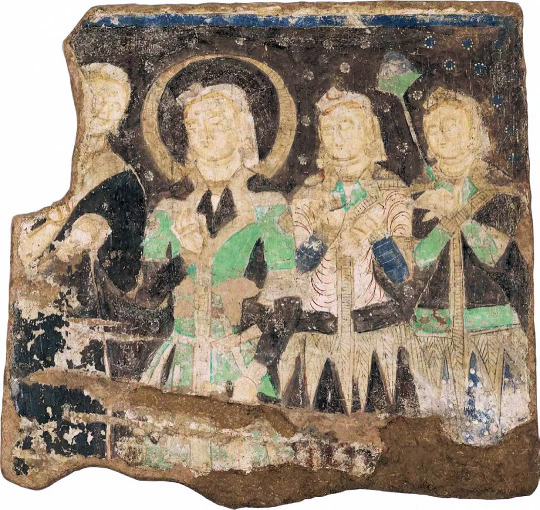



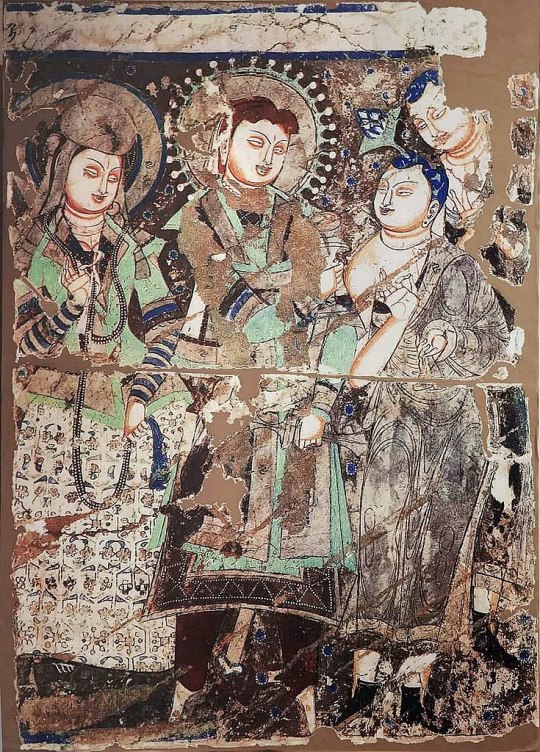





Murals from the Kizil Caves, painted between 300-600 AD. Painted in styles ranging from "Indo-Iranian" style derived from the Art of Gandhara and Sasanian art. Located in Xinjiang, China.
155 notes
·
View notes
Photo
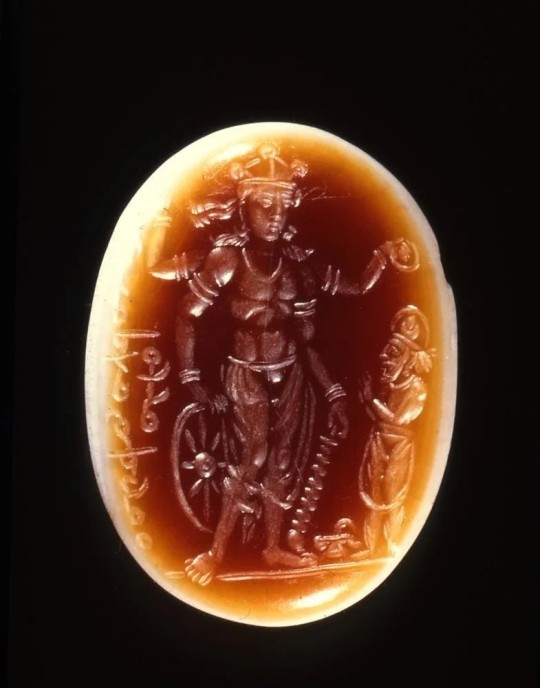
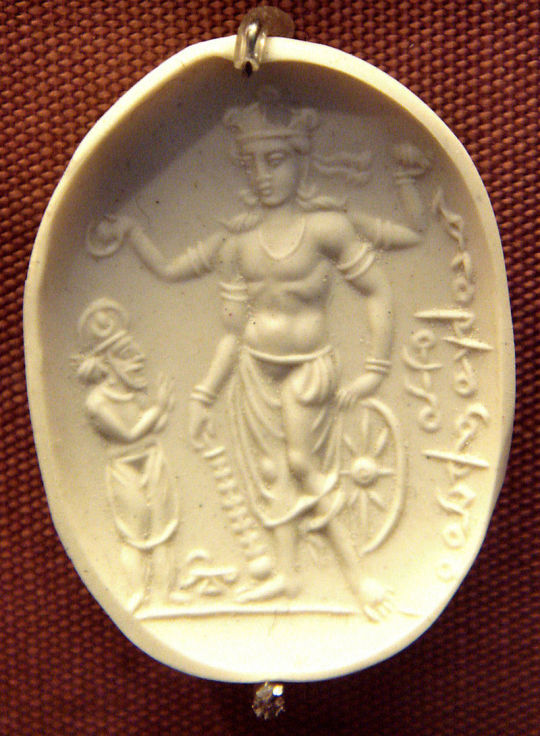
Kushano-Sasanian or Kidarite seal, 4th or 5th c.,inscribed in Bactrian and showing a dignitary worshipping Vasudeva-Vishnu, from Gandhara
410 notes
·
View notes
Text

The seated Buddha. Stucco sculpture from a stupa at the now-destroyed site of Hadda, Afghanistan, once part of the region of Gandhara. Artist unknown; ca. 300 CE (late Kushan period). Now in the Cleveland Museum of Art.
#art#art history#Buddha#Gautama Buddha#Buddhism#Buddhist art#Gandhara#South Asia#South Asian art#ancient art#Kushan period#sculpture#stucco#Cleveland Museum of Art
406 notes
·
View notes
Text
Origins of the Pibo: Let’s take a trip along the Silk Road.
1. Introduction to the garment:
Pibo 披帛 refers to a very thin and long shawl worn by women in ancient East Asia approximately between the 5th to 13th centuries CE. Pibo is a modern name and its historical counterpart was pei 帔. But I’ll use pibo as to not confuse it with Ming dynasty’s xiapei 霞帔 and a much shorter shawl worn in ancient times also called pei.
Below is a ceramic representation of the popular pibo.
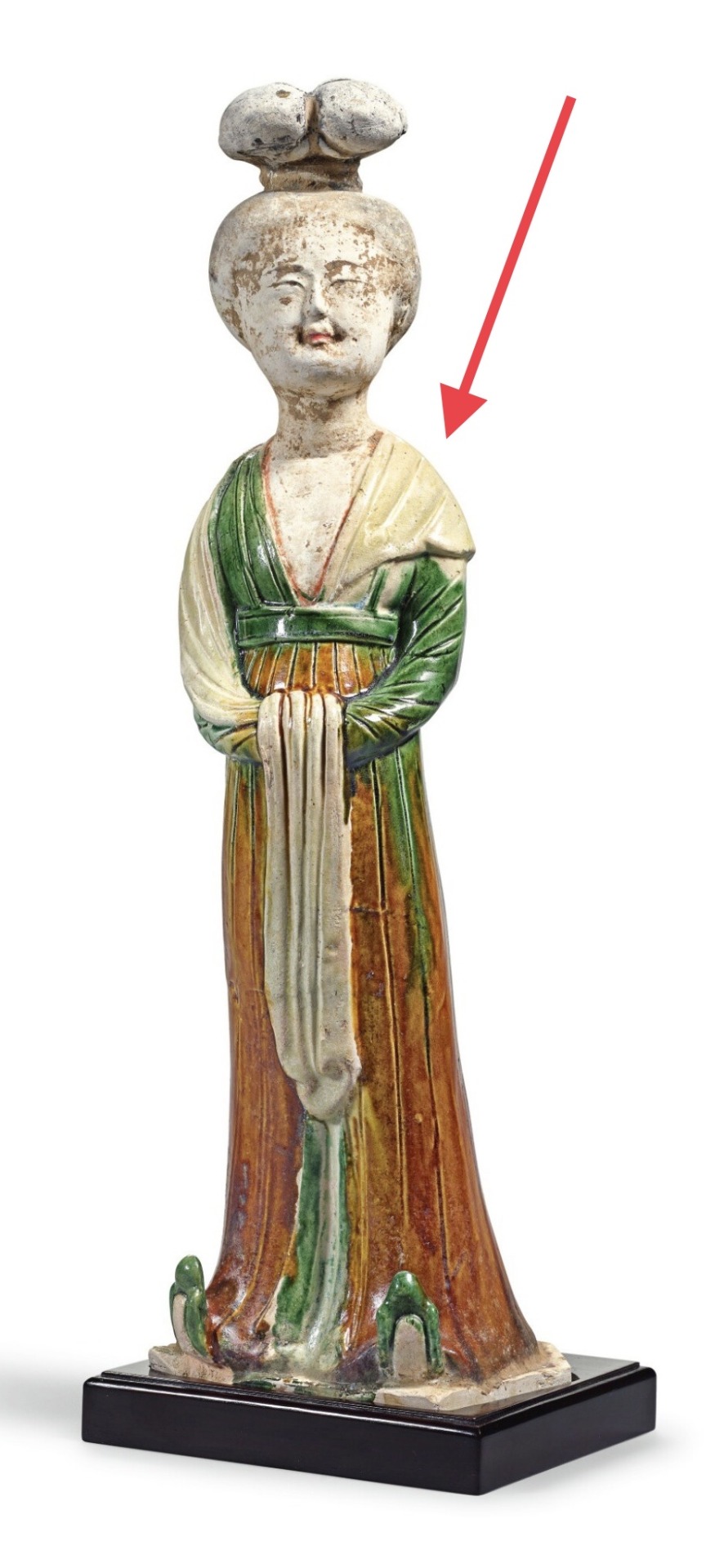
A sancai-glazed figure of a court lady, Tang Dynasty (618–690, 705–907 CE) from the Sze Yuan Tang Collection. Artist unknown. Sotheby’s [image source].
Although some internet sources claim that pibo in China can be traced as far back as the Qin (221-206 BCE) or Han (202 BCE–9 CE; 25–220 CE) dynasties, we don’t start seeing it be depicted as we know it today until the Northern and Southern dynasties period (420-589 CE). This has led to scholars placing pibo’s introduction to East Asia until after Buddhism was introduced in China. Despite the earliest art representations of the long scarf-like shawl coming from the Northern and Southern Dynasties period, the pibo reached its popularity apex in the Tang Dynasty (618–690 CE: 705–907 CE).
Academic consensus: Introduction via the Silk Road.
The definitive academic consensus is that pibo evolved from the dajin 搭巾 (a long and thin scarf) worn by Buddhist icons introduced to China via the Silk Road from West Asia.
披帛是通过丝绸之路传入中国的西亚文化, 与中国服饰发展的内因相结合而流行开来的一种"时世妆" 的形式. 沿丝绸之路所发现的披帛, 反映了丝绸贸易的活跃.
[Trans] Pibo (a long piece of cloth covering the back of the shoulders) was a popular female fashion period accessory introduced to China by West Asian cultures by way of the Silk Road and the development of Chinese costumes. The brocade scarves found along the Silk Road reflect the prosperity of the silk trade that flourished in China's past (Lu & Xu, 2015).
I want to add to the above theory my own speculation that, what the Chinese considered to be dajin, was most likely an ancient Indian garment called uttariya उत्तरीय.
2. Personal conjecture: Uttariya as a tentative origin to pibo.
In India, since Vedic times (1500-500 BCE), we see mentions in records describing women and men wearing a thin scarf-like garment called “uttariya”. It is a precursor of the now famous sari. Although the most famous depiction of uttariya is when it is wrapped around the left arm in a loop, we do have other representations where it is draped over the shoulders and cubital area (reverse of the elbow).
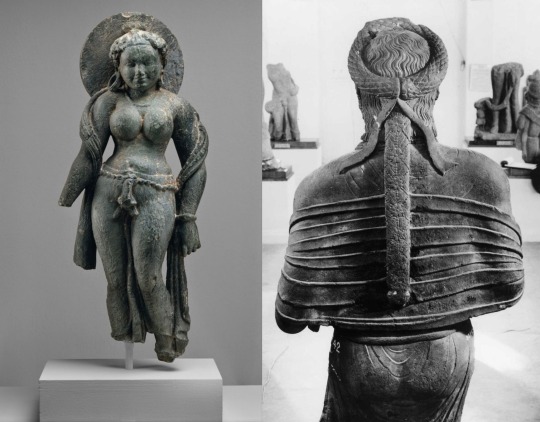
Left: Hindu sculpture “Mother Goddess (Matrika)”, mid 6th century CE, gray schist. Artist unknown. Looted from Rajasthan (Tanesara), India. Photo credit to Metropolitan Museum of Art, New York, United States [image source].
Right: Rear view of female statue possibly representing Kambojika, the Chief Queen of Mahakshatrapa Rajula, ca. 1st century CE. Artist unknown. Found in the Saptarishi Mound, Mathura, India. Government Museum, Mathura [image source].
Buddhism takes many elements from Hindu mythology, including apsaras अप्सरा (water nymphs) and gandharvas गन्धर्व (celestial musicians). The former was translated as feitian 飞天 in China. Hindu deities were depicted wearing clothes similar to what Indian people wore, among which we find uttariya, often portrayed in carvings and sculptures of flying and dancing apsaras or gods to show dynamic movement. Nevertheless, uttariya long predated Buddhism and Hinduism.
Below are carved representation of Indian apsaras and gandharvas. Notice how the uttariya are used.

Upper left: Carved relief of flying celestials (Apsara and Gandharva) in the Chalukyan style, 7th century CE, Chalukyan Dynasty (543-753 CE). Artist Unknown. Aihole, Karnataka, India. National Museum, New Delhi, India [image source]. The Chalukyan art style was very influential in early Chinese Buddhist art.
Upper right: Carved relief of flying celestials (gandharvas) from the 10th to the 12th centuries CE. Artist unknown. Karnataka, India. National Museum, New Delhi, India [image source].
Bottom: A Viyadhara (wisdom-holder; demi-god) couple, ca. 525 CE. Artist unknown. Photo taken by Nomu420 on May 10, 2014. Sondani, Mandsaur, India [image source].
Below are some of the earliest representations of flying apsaras found in the Mogao Caves, Gansu Province, China. An important pilgrimage site along the Silk Road where East and West met.
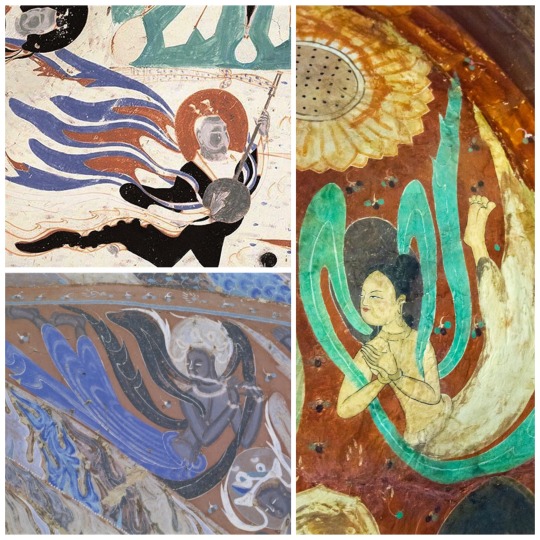
Left to right: Cave No. 461, detail of mural in the roof of the cave depicting either a flying apsara or a celestial musician. Western Wei dynasty (535–556 CE). Artist unknown. Mogao Grottoes, Dunhuang, China [image source].
Cave 285 flying apsara (feitian) in one of the Mogao Caves. Western Wei Dynasty (535–556 CE), Artist unknown. Photo taken by Keren Su for Getty Images. Mogao Grottoes, Dunhuang, China [image source].
Cave 249. Mural painting of feitian playing a flute, Western Wei Dynasty (535-556 CE). Image courtesy by Wang Kefen from The Complete Collection of Dunhuang Grottoes, Vol. 17, Paintings of Dance, The Commercial Press, Hong Kong, 2001, p. 15. Mogao Grottoes, Dunhuang, China [image source].
I theorize that it is likely that the pibo was introduced to China via Buddhism and Buddhist iconography that depicted apsaras (feitian) and other deites wearing uttariya and translated it to dajin.
3. Trickle down fashion: Buddhism’s journey to the East.
However, since Buddhism and its Indian-based fashion spread to West Asia first, to Sassanian Persians and Sogdians, it is likely that, by the time it reached the Han Chinese in the first century CE, it came with Persian and Sogdian influence. Persians’ fashion during the Sassanian Empire (224–651 CE) was influenced by Greeks (hellenization) who also had a a thin long scarf-like garment called an epliblema ἐπίβλημα, often depicted in amphora (vases) of Greek theater scenes and sculptures of deities.

Left to right: Dame Baillehache from Attica, Greece. 3rd century BCE, Hellenistic period (323-30 BCE), terracotta statuette. Photo taken by Hervé Lewandowski. Louvre Museum, Paris, France [image source].
Deatail view of amphora depicting the goddess Artemis by Athenian vase painter, Andokides, ca. 525 BCE, terracotta. Found in Vulci, Italy. Altes Museum, Berlin, Germany [image source].
Statue of a Kore (young girl), ca. 570 BCE, Archaic Period (700-480 BCE), marble. Artist unknown. Uncovered from Attica, Greece. Acropolis Museum, Athens, Greece [image source].
Detail view of Panathenaic (Olympic Games) prize amphora with lid, 363–362 BCE, Attributed to the Painter of the Wedding Procession and signed by Nikodemos, terracotta. Uncovered from Athens, Greece. J. Paul Getty Museum, Los Angeles, California, United States [image source].
Roman statue depicting Euterpe, muse of lyric poetry and music, ca. 2nd century CE, marble, Artist unknown. From the Villa of G. Cassius Longinus near Tivoli, Italy. Photo taken by Egisto Sani on March 12, 2012, Vatican Museums, Rome, Italy [image source].
Greek (or Italic) tomb mural painting from the Tomb of the Diver, ca. 470 BCE, fresco. Artist unknown. Photo taken by Floriano Rescigno. Necropolis of Paestum, Italy [image source].
Below are Iranian and Iraqi period representations of this long thin scarf.

Left to right: Closeup of ewer likely depicting a female dancer from the Sasanian Period (224–651 CE) in ancient Persia , Iran, 6th-7th century CE, silver and gilt. Artist unknown. Mary Harrsch. July 10, 2015. Arthur M. Sackler Gallery of Asian Art, Smithsonian, Washington D.C [image source].
Ewer with nude dancer probably representing a maenad, companion of Dionysus from the Sasanian Period (224–651 CE) in ancient Persia, Iran, 6th-7th century CE, silver and gilt. Artist unknown. Mary Harrsch. July 16, 2015. Arthur M. Sackler Gallery of Asian Art, Smithsonian, Washington D.C [image source].
Painting reconstructing the image of unveiled female dancers depicted in a fresco, Early Abbasid period (750-1258 CE), about 836-839 CE from Jawsaq al-Khaqani, Samarra, Iraq. Museum of Turkish and Islamic Art, Istanbul [image source].
The earliest depictions of Buddha in China, were very similar to West Asian depictions. Ever wonder why Buddha wears a long draped robe similar to a Greek himation (Romans called it toga)?
Take a look below at how much the Greeks influenced the Kushans in their art and fashion. The top left image is one of the earliest depictions of Buddha in China. Note the similarities between it and the Gandhara Buddha on the right.
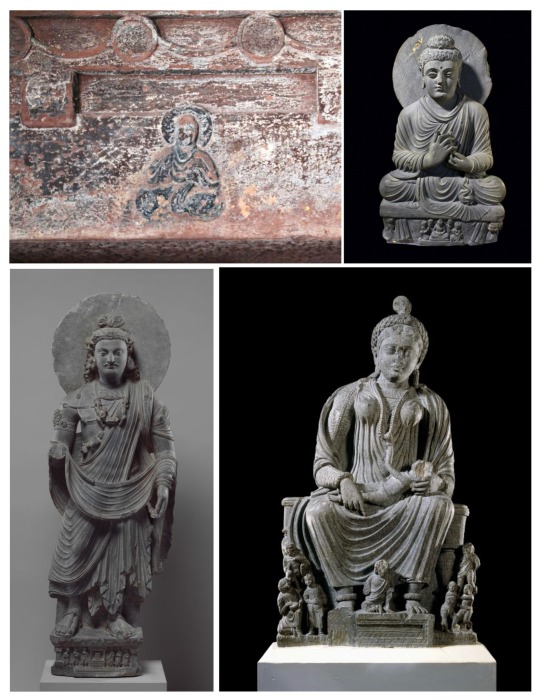
Left: Seated Buddha, Mahao Cliff Tomb, Sichuan Province, Eastern Han Dynasty, late 2nd century C.E. (photo: Gary Todd, CC0).
Right: Seated Buddha from Gandhara, Pakistan c. 2nd–3rd century C.E., Gandhara, schist (© Trustees of the British Museum)
Standing Bodhisattva Maitreya (Buddha of the Future), ca. 3rd century, gray schist. From Gandhara, Pakistan. Image credit to The Metropolitan Museum of Art, New York City, United States [image source].
Statue of seated goddess Hariti with children, ca. 2nd to 3rd centuries CE, schist. Artist unknown. From Gandhara, Pakistan. The British Museum, London, England [image source].
Before Buddhism spread outside of Northern India (birthplace), Indians never portrayed Buddha in human form.
Early Buddhist art is aniconic, meaning the Buddha is not represented in human form. Instead, Buddha is represented using symbols, such as the Bodhi tree (where he attained enlightenment), a wheel (symbolic of Dharma or the Wheel of Law), and a parasol (symbolic of the Buddha’s royal background), just to name a few. […] One of the earliest images [of Buddha in China] is a carving of a seated Buddha wearing a Gandharan-style robe discovered in a tomb dated to the late 2nd century C.E. (Eastern Han) in Sichuan province. Ancient Gandhara (located in present-day Afghanistan, Pakistan, and northwest India) was a major center for the production of Buddhist sculpture under Kushan patronage. The Kushans occupied portions of present-day Afghanistan, Pakistan, and North India from the 1st through the 3rd centuries and were the first to depict the Buddha in human form. Gandharan sculpture combined local Greco-Roman styles with Indian and steppe influences (Chaffin, 2022).
In the Mogao Caves, which contain some of the earliest Buddhist mural paintings in China, we see how initial Chinese Buddhist art depicted Indian fashion as opposed to the later hanfu-inspired garments.

Left to right: Cave 285, detail of wall painting, Western Wei dynasty (535–556 CE). Mogao Grottoes, Dunhuang, China. Courtesy the Dunhuang Academy [image source]. Note the clothes the man is wearing. It looks very similar to a lungi (a long men’s skirt).
Photo of Indian man sitting next to closed store wearing shirt, scarf, lungi and slippers. Paul Prescott. February 20, 2015. Varanasi, India [image source].
Cave 285, mural depiction of worshipping bodhisattvas, 6th century CE, Wei Dynasty (535-556 A.D.), Unknown artist. Mogao Grottoes, Dunhuang, China. Notice the half bow on his hips. That is a common style of tying patka (also known as pataka; cloth sashes) that we see throughout Indian history. Many of early Chinese Buddhist paintings feature it, including the ones at Mogao Caves.
Indian relief of Ashoka wearing dhoti and patka, ca. 1st century BC, Unknown artist. From the Amaravathi village, Guntur district, Andhra Pradesh, India. Currently at the Guimet Museum, Paris [image source].
Cave 263. Mural showing underlying painting, Northern Wei Dynasty (386–535 CE). Artist Unknown. Picture taken November 29, 2011, Mogao Grottoes, Dunhuang, China [image source]. Note the pants that look to be dhoti.
Comparison photo of modern dhoti advertisement from Etsy [image source].
Spread of Buddhism to East Asia.

Map depicting the spread of Buddhism from Northern India to the rest of Asia. Gunawan Kartapranata. January 31, 2014 [image source]. Note how Mahayana Buddhism arrived to China after passing through Kushan, Bactrean, and nomadic steppe lands, absorbing elements of each culture along the way.
Wealthy Buddhist female patrons emulated the fantasy fashion worn by apsaras, specifically, the uttariya/dajin and adopted it as an everyday component of their fashion.

Cave 285. feitian mural painting on the west wall, Western Wei Dynasty (535–556 CE). Artist unknown. Mogao Grottoes, Dunhuang, China [image source].
Cave 285. Detail view of offering bodhisattvas (bodhisattvas making offers to Buddha) next to the phoenix chariot on the Western wall of the cave. Western Wei Dynasty (535–556 CE). Artist unknown. Mogao Grottoes, Dunhuang, China [image source].
Cave 61 Khotanese (from the kingdom of Khotan 于阗 [56–1006 CE]) donor ladies, ca. 10th century CE, Five Dynasties period (907 to 979 CE). Artist unknown. Picture scanned from Zhang Weiwen’s Les oeuvres remarquables de l'art de Dunhuang, 2007, p. 128. Uploaded to Wikimedia Commons on October 11, 2012 by Ismoon. Mogao Grottoes, Dunhuang, China [image source].
Detail view of Ladies Adorning Their Hair with Flowers 簪花仕女图, late 8th to early 9th century CE, handscroll, ink and color on silk, Zhou Fang 周昉 (730-800 AD). Liaoning Provincial Museum, Shenyang, China [image source].
Therefore, the theory I propose of how the pibo entered East Asia is:
India —> Greek influenced West Asia (Sassanian Persians, Sogdians, Kushans, etc…) —> Han China —> Rest of East Asia (Three Kingdoms Korea, Asuka Japan, etc…)
Thus, the most likely theory, in my person opinion, is Buddhist iconography depicting uttariya encountered Greek-influenced West Asian Persian, Sogdian, and Kushan shawls, which combined arrived to China but wouldn’t become commonplace there until the explosion in popularity of Buddhism from the periods of Northern and Southern Dynasties to Song.
References:
盧秀文; 徐會貞. 《披帛與絲路文化交流》 [The brocade scarf and the cultural exchanges along the Silk Road]. 敦煌研究 (中國: 敦煌研究編輯部). 2015-06: 22 – 29. ISSN 1000-4106.
#hanfu#chinese culture#chinese history#buddhism#persian#sogdian#kushan#gandhara#indian fashion#uttariya#pibo#history#asian culture#asian art#asian history#asian fashion#east asia#south asia#india#pakistan#iraq#afghanistan#sassanian#silk road#fashion history#tang dynasty#eastern han dynasty#cultural exchange#greek fashion#mogao caves
283 notes
·
View notes
Text

Standing bodhisattva
Gandhara, Pakistan
Grey schist
Kushan period, 3rd century
123 notes
·
View notes
Text

1st-4th century A.D. carved marble head of the Buddha with rays emanating from it, suggesting syncretism with Apollo, Mithras/Sol Invictus, or possibly another deity. Found at Berenike, a Ptolemaic-Roman port on the Red Sea coast of Egypt.
source
#buddhism#religious syncretism#syncretism#buddha#siddhartha gautama#gandhara#egypt#archaeology#apollo#sol invictus#sourced
201 notes
·
View notes
Text

Standing Buddha, 150–200 CE. Pakistan, Gandhara, Kushan Period. Cleveland MA
131 notes
·
View notes
Text


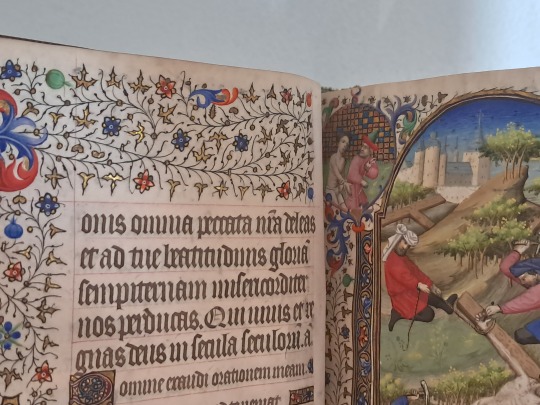

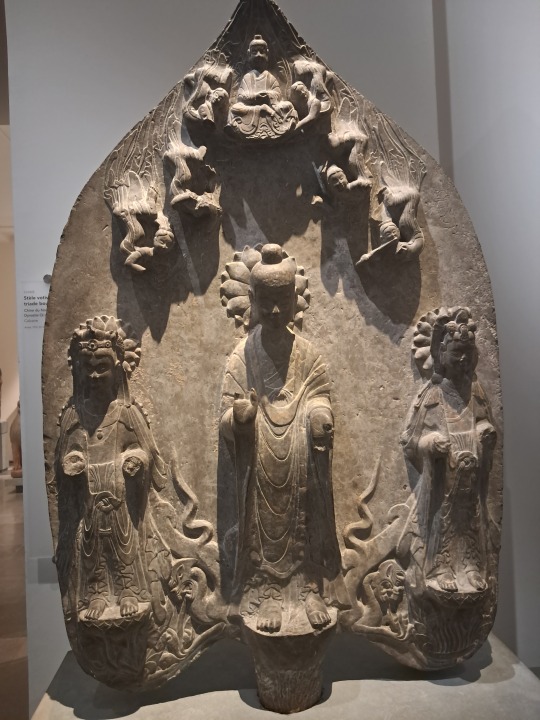

Paris, Café La Perle, Musée médiéval de Cluny, Musée asiatique Guimet.
#Café La Perle#Paris#France#Cluny#Guimet#Charles VII#Villon#Enluminures#Livre d'heures#Gandhara#Triade#Trinité
11 notes
·
View notes
Photo


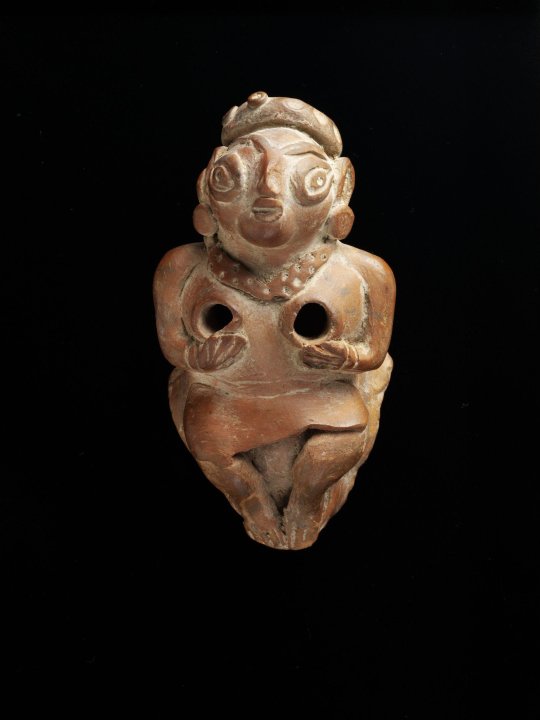

Terracotta Mother Goddess figurines, from the Gandhara culture, Pakistan, ca 1st-3rdC BC
(via V&A)
4 notes
·
View notes
Text
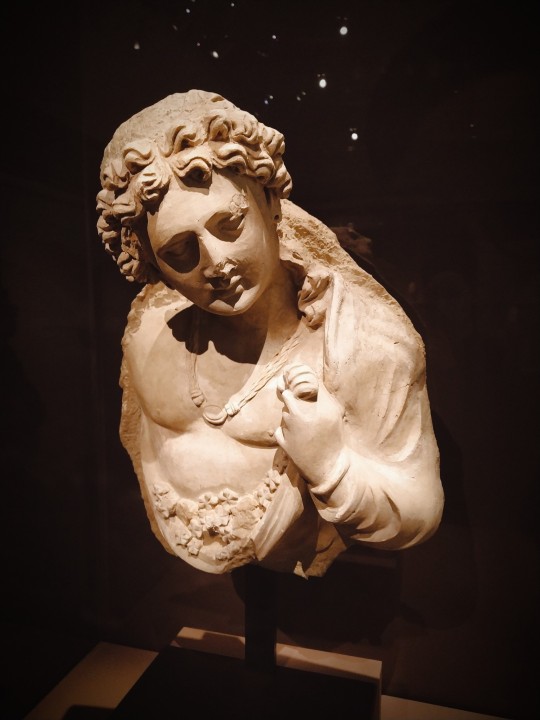
Grâce gréco-bouddhique
50 notes
·
View notes
Photo
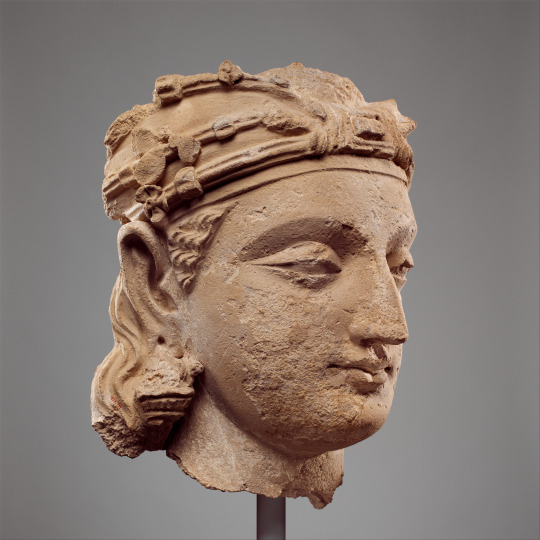
Monumental Bodhisattva Head, 5th century
Pakistan (ancient region of Gandhara)
Stucco
H. 19 3/4 in. (50.2 cm); W. 10 in. (25.4 cm); D. 10 in. (25.4 cm)
This head comes from a sculpture that would have been more than twelve feet tall and likely stood along the perimeter of a Buddhist sacred area enclosing a stupa. By the fourth and fifth centuries monumental imagery became increasingly popular in Gandhara and was almost exclusively restricted to images of the Buddha. The bodhisattva’s turban and jewelry might indicate that he is a rare image of Shakyamuni prior to enlightenment. Alternatively, the bodhisattva may have attended the Buddha as part of a massive triad.
Collection of the Metropolitan Museum of Art
#stucco#sculpture#Pakistan#Gandhara#Buddhism#bodhisattva#figure#cultural amalgam#5th century#art#art history#The Met#Metropolitan Museum of Art
16 notes
·
View notes
Text
Gandhara (GoDieGo) J-pop
youtube
"Journey to the West" is a Chinese biographical novel that is very popular in Japan. It depicts the activities of Sanzo Hoshi (priest), who goes on horseback to India in search of the Buddha's Dharma, and his three yokai, who follow him on foot. All three of them have supernatural powers, so walking is drowsy, but they match Sanzo Hoshi, a human. Sanzo Hoshi, in particular, has a passive personality, and it has become a standard in Japanese series since this work for a woman to play. Masako Natsume, the main character, was well- received, but died prematurely.
ガンダーラ (GoDieGo ) J-pop
「西遊記」は、日本でも非常に人気のある、中国の伝記小説。仏陀の仏法を求めてインドに騎馬で行く三蔵法師と、徒歩で従う従者の3匹の妖怪の活躍を描く。3匹とも神通力を持つので、徒歩なんてまどろっこしいのだが、人間である三蔵法師に合わせている。とくに三蔵法師は、受動的な性格をしていて、女性が演じることが、日本のシリーズでは、この作品から定番になった。主役の夏目雅子は評判も良かったが、早死にした。
#Gandhara#GoDieGo#J-pop#Babylman#Journey to the West#Sanzo Hoshi#Buddha's Dharma#Masako Natsume#Youtube
8 notes
·
View notes
Photo


Devata from Hund, Gandhara, 7th-8th century CE
250 notes
·
View notes
Photo

Proposed new provinces for Pakistan.
by generic_maps
#maps#provinces#pakistan#generic_maps#igsourced#kalat#makran#karachi#south sindh#north sindh#sulaiman#multan#sutlej#thal#gandhara#ravi#punjab#pakhtunkhwa#karakoman
60 notes
·
View notes
Text
The penetration of China by Buddhism not only gave the Chinese a new religion but, of central importance to this narrative, it gave to the world an entirely new style of art which has come to be known as Serindian. This term is coined from the two words Seres (China) and India. Logically it should have been simply a fusion of Indian Buddhist art and the art of contemporary Han China. It almost certainly would have been had it not been for the great Himalayan massif which so effectively isolated China from all direct contact with India. But faced by this impenetrable barrier, the gospel of Buddhism together with its art came to China by a roundabout route, gradually absorbing other influences on its way. Its real point of departure was not India proper but the Buddhist kingdom of Gandhara, situated in the Peshawar valley region of what is now north-western Pakistan. Here another artistic marriage had already taken place. This was between Indian Buddhist art, imported by the ruling Kushans (descendants of the Yueh-chih) in the first century AD, and Greek art, introduced to the region four hundred years earlier by Alexander the Great.
The most revolutionary product of this Graeco-Buddhist, or Gandharan, school was the depiction of Buddha in human form, for it was the first time that artists anywhere had allowed themselves to show him thus. As a being who had ceased to exist, theologically speaking, by achieving Nirvana and thus escaping the endless cycle of rebirth, he had always been portrayed before by means of a mystical symbol such as a single footprint, a wheel, a tree, a stupa or Sanskrit characters. But the Gandharan Buddha is shown by sculptors with straight, sharply chiselled nose and brow, classical lips and wavy hair–all Hellenistic influences. Another obvious Mediterranean introduction is the diaphanous, toga-like robe he wears in place of the expected loin cloth. But his eyes are heavy-lidded and protruding, the lobes of the ears elongated, and the oval-shaped face fleshy–all characteristics of Indian iconography. The stretched ear lobes symbolise Buddha’s casting away of the heavy, jewelled and worldly earrings that he had worn as a wealthy prince before his conversion to a life of self-denial and teaching
—Peter Hopkirk, Foreign Devils on the Silk Road: The Search for the Lost Cities and Treasures of Chinese Central Asia
#peter hopkirk#foreign devils on the silk road#history#china#india#gandhara#Buddhism#art#w#2024 reads#upl#reading through the silk road
2 notes
·
View notes
Text

Standing figures
Gandhara, possibly northeastern Peshawar Valley, Pakistan
Schist
Kushan period, 1st-2nd century
63 notes
·
View notes